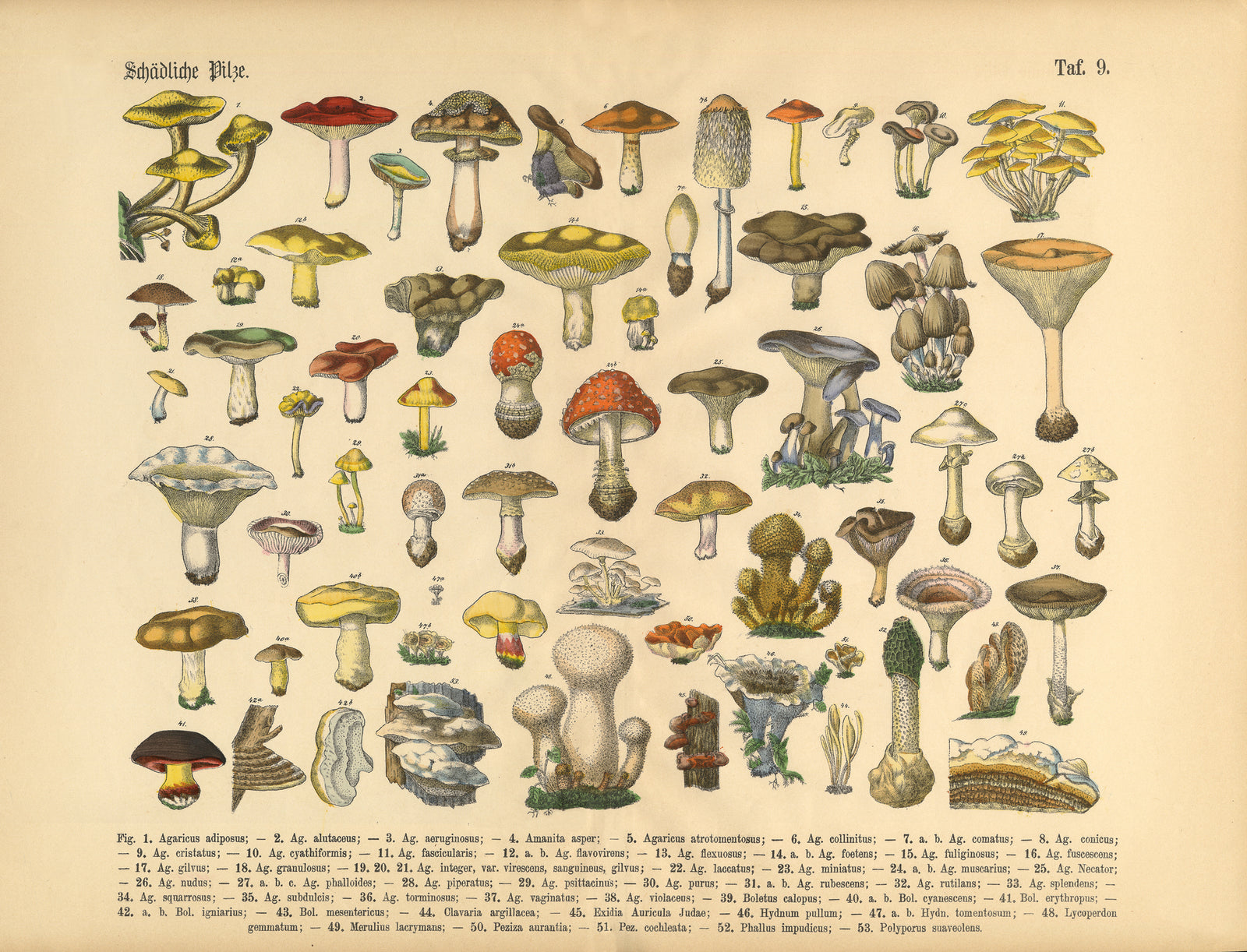Mushrooms have been used as food, medicine, and spiritual aids for centuries. Curiously, even though cultures all over the world have a lengthy history of enjoying mushrooms, there isn’t much written evidence detailing how this relationship came to be. What we do know is that mushrooms have endured as a popular ingredient. They continue to be prized for both their delicious flavor and their potential health benefits.
Here’s how our love of edible mushrooms came to be and where this beautiful relationship may be headed in the future.
The Origins of Edible Mushrooms in Humans
Many of us are fascinated by the concept of our ancestors “discovering” a new species of mushrooms for the first time, especially since their appearance varies so much. Even more intriguing is the fact that many wild mushrooms are poisonous, with some being lethal enough to cause death. How did humans determine which mushrooms were edible, which had psychoactive properties, and which were deadly?
Unless time travel becomes possible in the future, we likely won’t ever know exactly how early humans learned about edible and poisonous mushrooms. However, there are a few plausible theories, several of which may actually be true. First, our ancestors may have paid attention to what the local fauna was eating. If deer, boar, and other animals are eating a mushroom without negative effects, humans may feel safe to assume that species is safe. They may have also eaten unknown mushrooms just a bit at a time, which could make the unpleasant effects of the ‘shroom known without killing the person who ate it.
We do know that not every continent’s inhabitants were fond of mushrooms until they were introduced to the delicious fungi through global trade. For example, Americans weren’t regularly cooking with mushrooms until the late 1800s, after they were introduced to the idea by France’s haute cuisine. By that point, many cultures had already been enjoying mushrooms for ages!

Antique Engraved Victorian Botanical Illustration of Poisonous Mushrooms: Plate 9, from The Book of Practical Botany in Word and Image, Published in 1886
Using Fungi for Food and More
Many European, Asian, and South American countries have used fungi as food for hundreds (and even thousands) of years. European cultures enjoyed wild mushrooms such as porcinis, chanterelles, and oyster mushrooms. The huitlacoche fungus, which affects corn crops, has been eaten in Mexico since Aztec times because of its unique flavor. And Asian cuisine has long relied on beech mushrooms, shiitakes, and enokis to add umami to its dishes.
Our ancestors probably didn’t know the science behind mushrooms’ health benefits, but that doesn’t mean they couldn’t recognize the positive physical effects of eating certain species. In fact, mushrooms have been used to treat a number of ailments for centuries. That’s not to mention the general nutritional benefits of mushrooms, which are plentiful in nature even during poor growing seasons when communities can’t count on bountiful crops.
Many cultures that ate mushrooms for food also used certain hallucinogenic species for spiritual ceremonies, divine inspiration, and even recreation. Vikings and Siberian shamans may have ingested Amanita muscaria mushrooms during religious ceremonies in the Middle Ages. Halfway across the world, Mayan leaders chose a very similar path to reflect upon important decisions.
Mushrooms Today (and Beyond)
Most Minnesotans who eat mushrooms in the 21st century are interested in their health benefits or culinary applications. Gourmet mushrooms taste great and are a healthy addition to any diet. Some species are even dried and taken as supplements in an attempt to prevent everything from cancer to aging.
Although the average mushroom lover may not be interested in the mind-altering varieties, we’d be remiss not to mention that certain psychedelic mushrooms are currently being studied for their potential mental health benefits. Early studies show they may be able to help veterans and trauma survivors treat their PTSD when prescribed by a medical professional and coupled with psychotherapy.
In the near future, we may begin to use mushrooms for a number of high-tech applications. We’re already using mushrooms to create artificial meat substitutes, packing materials, and other environmentally friendly products. Now, some scientists believe mushrooms can help us break down plastic and other debris. Indeed, certain species can actually convert dangerous substances into innocuous compounds, from pesticides to heavy metals to nuclear waste! This may sound like something out of a sci-fi movie, but we’re already well on the way to using mushrooms to clean up our planet.
If you’re a Minnesota mushroom lover, check out R&R Cultivation’s blog, which we update often. It has a lot of great info about buying and cooking with gourmet mushrooms, plus the occasional biology or history lesson! Also be sure to check out our extensive selection of Minnesota grown, organic mushrooms.
Image: Very Rare, Beautifully Illustrated Antique Engraved Victorian Botanical Illustration of Poisonous Mushrooms: Plate 9, from The Book of Practical Botany in Word and Image (Lehrbuch der praktischen Pflanzenkunde in Wort und Bild), Published in 1886. Copyright has expired on this artwork. Digitally restored.

